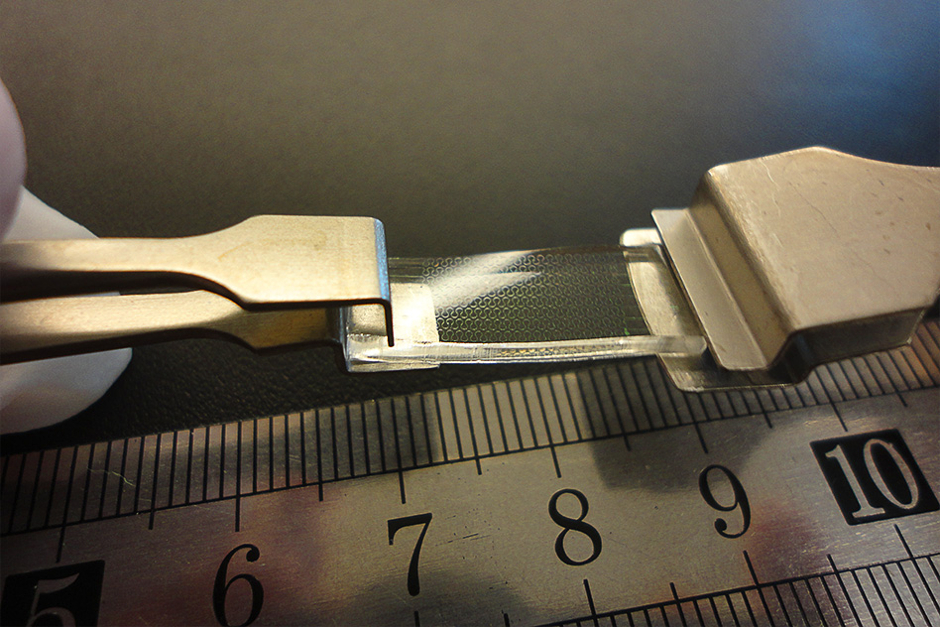Photonic devices bend and stretch for potential diagnostics
Researchers have developed a method for making photonic devices that bend and stretch, an advance that could find use in body worn, or implanted, diagnostic and monitoring devices.

MIT Associate Professor Juejun Hu said that there is interest in the possibility of optical technologies that can stretch and bend, especially for applications such as skin-mounted monitoring devices that could directly sense optical signals. Such devices might simultaneously detect heart rate, blood oxygen levels, and even blood pressure.
The findings, which involve the use of chalcogenide, a specialised form of glass, are described in a paper by Hu and others at MIT, the University of Central Florida, and universities in China and France. The paper is slated for publication in Light: Science and Applications.
Photonic devices process light beams directly using systems of LEDs, lenses, and mirrors fabricated with the same kinds of processes used to manufacture electronic microchips. Using light beams rather than a flow of electrons can have advantages for many applications; if the original data is light-based, for example, optical processing avoids the need for a conversion process.
Register now to continue reading
Thanks for visiting The Engineer. You’ve now reached your monthly limit of news stories. Register for free to unlock unlimited access to all of our news coverage, as well as premium content including opinion, in-depth features and special reports.
Benefits of registering
-
In-depth insights and coverage of key emerging trends
-
Unrestricted access to special reports throughout the year
-
Daily technology news delivered straight to your inbox










Water Sector Talent Exodus Could Cripple The Sector
Maybe if things are essential for the running of a country and we want to pay a fair price we should be running these utilities on a not for profit...